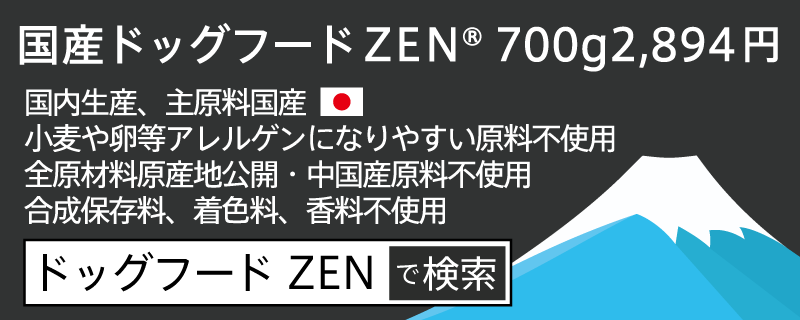 ニンニク(ガーリック)について、犬にとって毒だから一切上げては駄目という事が言われることがある一方で、有用性があると言われ様々なプレミアムドッグフードに利用されています。果たしてどちらが本当なのでしょうか?
ニンニク(ガーリック)について、犬にとって毒だから一切上げては駄目という事が言われることがある一方で、有用性があると言われ様々なプレミアムドッグフードに利用されています。果たしてどちらが本当なのでしょうか?
ニンニクと犬に関する論文
ニンニクと犬についての論文を調査してみました。
ニンニクの毒性(溶血性貧血)
PROCEDURE:4 dogs were given 1.25 ml of garlic extract/kg of body weight (5 g of whole garlic/kg) intragastrically once a day for 7 days. The remaining 4 contol dogs received water instead of garlic extract. Complete blood counts were performed, and methemoglobin and erythrocyte-reduced glutathione concentrations, percentage of erythrocytes with Heinz bodies, and percentage of eccentrocytes were determined before and for 30 days after administration of the first dose of garlic extract. Ultrastructural analysis of eccentrocytes was performed.
RESULTS:Compared with initial values, erythrocyte count, Hct, and hemoglobin concentration decreased to a minimum value on days 9 to 11 in dogs given garlic extract. Heinz body formation, an increase in erythrocyte-reduced glutathione concentration, and eccentrocytes were also detected in these dogs. However, no dog developed hemolytic anemia.
引用Hematologic changes associated with the appearance of eccentrocytes after intragastric administration of garlic extract to dogs
Copyright: American Journal of Veterinary Research
この論文を要約すると「4頭の犬に、体重1kgあたり1.25mlのニンニク抽出物1日1回を7日間与えた場合に、別にニンニク抽出物の代わりに水を与えられた4頭の個体と比べて、9日から11日目に溶血の兆候が見られたが、溶血性貧血は発症しなかった」となります。
1.25mlのニンニク抽出物は、5g(5,000mg)のニンニクに相当します。体重5kgの犬だと給与量は25gにあたりますので、相当量を与えられてると考えられますが、それでも溶血性貧血は発病しませんでした。
ただ、ニンニク一片が大凡8gと考えると、落としたりして誤飲した際の摂取量が有毒性が示唆される5g/kgに到達する可能性があるので、犬が近くにいる際のニンニクの取り扱いについて十分な注意が必要でしょう。
ニンニクと糖尿病
The present study was carried out to investigate the hypoglycaemic effects of metformin and garlic (Allium sativum Linn) in alloxan-induced diabetic dogs. The anti-diabetic activity of garlic had never been investigated in experimental diabetic dogs. Twenty-one adult dogs were randomly allocated into three equal groups consisting of seven dogs. The first group was the diabetic control, the second was the metformin treated and the third was the garlic-treated group. This study aimed to test 14-day oral administration of garlic (100 mg/kg) for its effects in alloxan-induced diabetic dogs in comparison with metformin (1,700 mg/dog/day) anti-diabetic activity. The mean decrease in blood glucose was 9.27 mg/dl for metformin and 25.93 mg/dl for garlic. The results showed that treatment with metformin non-significantly reduced blood glucose level (p > 0.05) and significantly increased serum insulin level in diabetic dogs (p < 0.05). In contrast to metformin, garlic resulted in a significant decrease in the level of blood glucose, with a concomitant significant increase in the serum insulin level in diabetic dogs (p < 0.05). Garlic had a mild but significant blood glucose-lowering effect and the long-term use of this agent may be advantageous, over chemical drugs, in alleviating some of the chronic diseases and complications caused by diabetes.
引用A comparison between metformin and garlic on alloxan-induced diabetic dogs
この論文をニンニクの記載を中心に要約すると「糖尿病の犬に、メトホルミンを与えた場合と、ニンニク(100mg/kg)を与えた場合とを比較した。双方とも血糖値を有意に低下させた。ニンニクは軽度であるが、有意に血中グルコースを低下させた。」となります。
この論文では、体重1kg当たり100mgのニンニクで調査しています。ニンニクが糖尿病の犬にとって、薬を使うことなく血糖値を低下させる可能性が高いことが示唆されています。
ニンニクと脂質異常症(高脂血症)
2. The hypolipidemic effects of Commiphora mukul (guggulu) and Alium sativum (Garlic powder) were screened in dog and Presbytis monkeys. 3. Progressive decrease in the mean values of cholesterol, triglycerides and phospholipids were conspicuous for forty eight hours following the administration of guggulu/garlic powder. 4. 25 mg/kg body weight garlic powder was more effective in lowering the serum cholesterol and triglycerides as compared with that of guggulu.
引用Hypolipidemic activity of guggal resin (Commiphora mukul) and garlic (Alium sativum linn.) in dogs (Canis familiaris) and monkeys (Presbytis entellus entellus Dufresne).
この論文を犬の記載を中心に要約すると「犬にニンニクパウダー(25mg/kg)を与えた場合、グッグルを与えた場合と比較して、血清コレステロール及びトリグリセリドの低下について、より効果的であった」となります。
この論文では、体重1kg当たり25mgのガーリックパウダー(乾燥ニンニク)で調査しています。脂質異常症(高脂血症)の犬にとって、ニンニクが有効であることが示唆されています。
総論
ニンニクの危険性について、その元となっている論文は1番目に紹介させて頂いたものではないかと考えられますが、この論文ではペットフードに含まれるような量での結果ではなく、この結果からペットフードに含まれているニンニクの危険性について論じるべきではないと思われます。
糖尿病と脂質異常症の例から考えると、100mg/kg程度のニンニク、25mg/kg程度のガーリックパウダーであれば有用な効果が見込めそうです。ドッグフードであれば、大凡ニンニクで0.5%、ガーリックパウダーで0.125%程度の含有量となります。これは有毒性について調査された1番目の論文の際に与えられた量の2%(有用量の約50倍の量)にあたります。
ペットフードの表記原材料の下の方に表示されている場合には、その程度以下の量が添加されている可能性が高いと思います。もちろん弊社が製造販売するZENも0.1%以下となっています。
必須の栄養素や健康に良いとされる食品でも適正量を上回れば害になることは多々あります。例えば、犬にとって必須の栄養素であるナトリウムも、AAFCOの基準の50倍を与えられれば致死量に近い量になります。ドッグフードによく使用されるカモミールやペパーミント、マリーゴールドといったハーブ類とされる原料についても、有用とされる量の50倍を与えれば嘔吐などの症状が現れる可能性が高くなります。
人間でも、通常摂取量の50倍のニンニクを一度に摂取すれば、溶血や胃粘膜への傷害、腸内細菌の死滅等のリスクがありますので、重篤な症状が出る可能性が極めて高いです。
「過ぎたるは及ばざるが如し」という諺がありますが、ニンニクについても過ぎたるは及ばざるが如しで、適切な量のニンニクであれば、犬の健康にとって有用であると考えられます。





